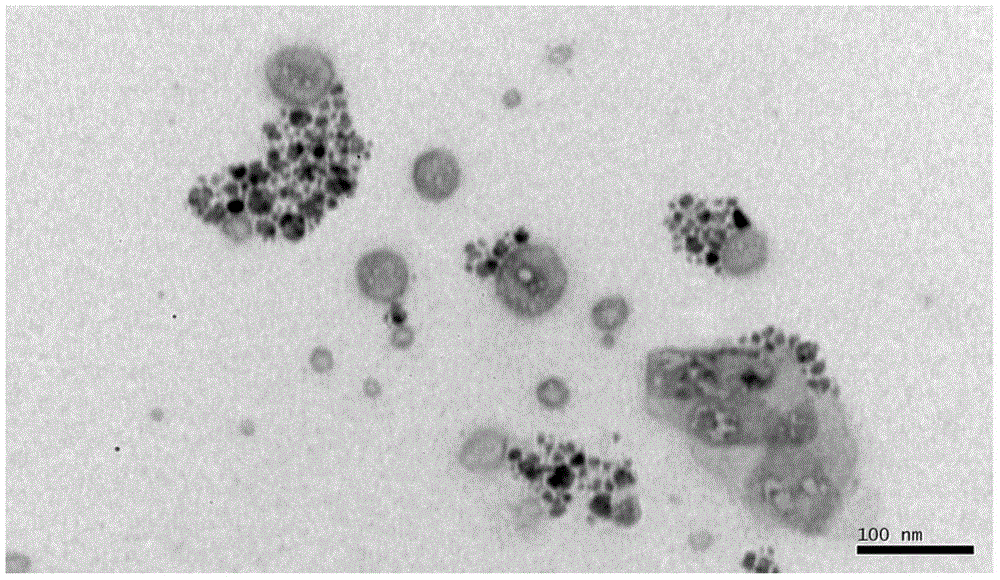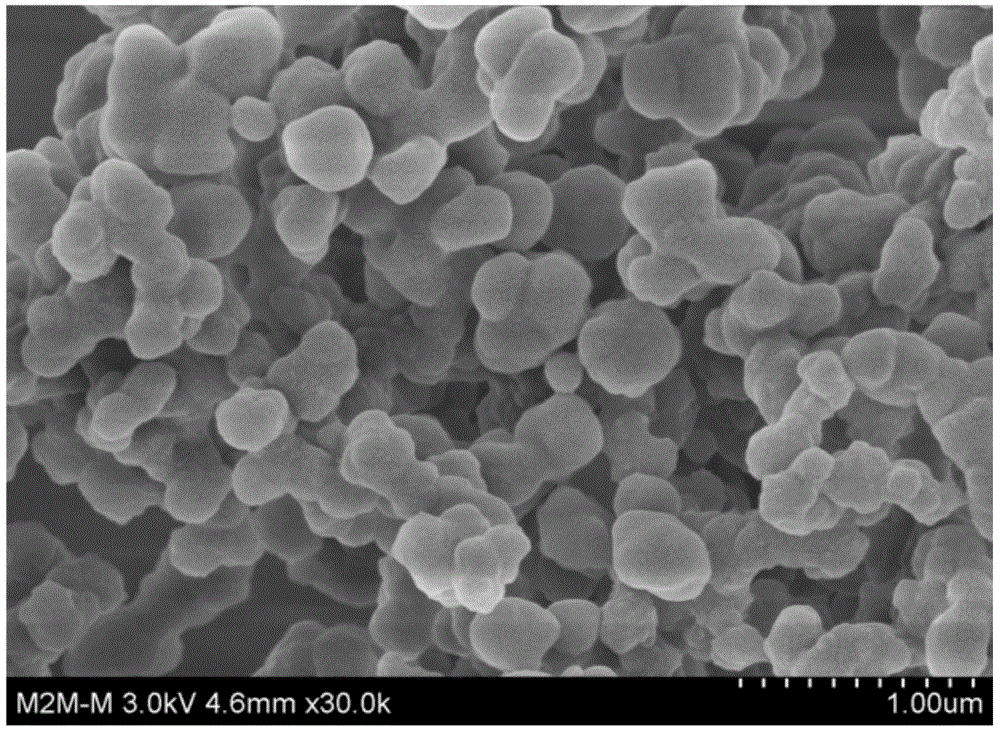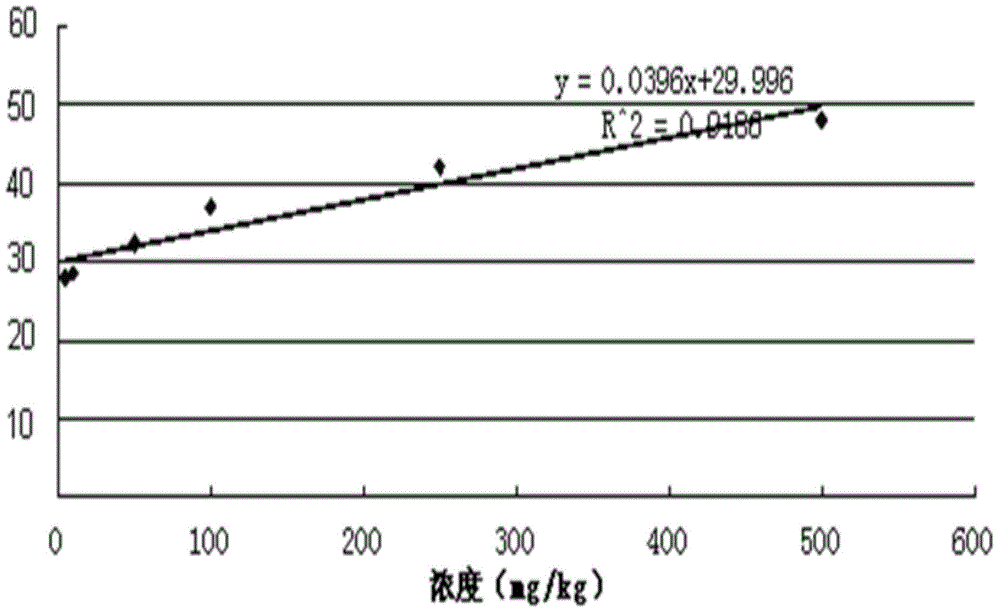Magnetic molecularly imprinted polymer-fluorescence analysis method
A technology of magnetic molecular imprinting and fluorescence analysis, which is applied in the field of analysis, can solve the problems such as the difficulty of preparing small molecule natural antibodies, and achieve the effect of good linear range and rapid detection
- Summary
- Abstract
- Description
- Claims
- Application Information
AI Technical Summary
Problems solved by technology
Method used
Image
Examples
specific Embodiment approach 1
[0022] Specific embodiment 1: In this embodiment, the magnetic molecularly imprinted polymer-fluorescence analysis method is specifically carried out according to the following steps:
[0023] 1. FeCl 3 ·6H 2 O and FeSO 4 ·7H 2 Dissolve O in 100mL deionized water, under the condition of nitrogen protection, heat the water bath to the temperature of 60℃~70℃, add alkali solution until black precipitate is formed, keep it under stirring condition for 20min~40min, then add polyethylene glycol and oleic acid , to obtain the modified magnetic nanoparticles;
[0024] Among them, FeCl 3 ·6H 2 The mass of O is 2.7g, FeSO 4 ·7H 2 The quality of O is 1.7g, the concentration of alkali solution is 1.0mol / L, the quality of polyethylene glycol is 1g, and the volume of oleic acid is 2mL;
[0025] 2. Mix 1mmol permethazine, 4mmol methacrylic acid, 2mL solvent and 30mL porogen, sonicate for 30min, control the temperature at 4°C under dark conditions, keep it for 10h~12h, then add 2mL cr...
specific Embodiment approach 2
[0027] Embodiment 2: The difference between this embodiment and Embodiment 1 is that the alkaline solution in step 1 is ammonia water or NaOH solution. Others are the same as in the first embodiment.
specific Embodiment approach 3
[0028] Specific embodiment three: the difference between this embodiment and specific embodiment one is: in step two, the solvent is acetonitrile. Others are the same as in the first embodiment.
PUM
 Login to View More
Login to View More Abstract
Description
Claims
Application Information
 Login to View More
Login to View More - R&D
- Intellectual Property
- Life Sciences
- Materials
- Tech Scout
- Unparalleled Data Quality
- Higher Quality Content
- 60% Fewer Hallucinations
Browse by: Latest US Patents, China's latest patents, Technical Efficacy Thesaurus, Application Domain, Technology Topic, Popular Technical Reports.
© 2025 PatSnap. All rights reserved.Legal|Privacy policy|Modern Slavery Act Transparency Statement|Sitemap|About US| Contact US: help@patsnap.com



